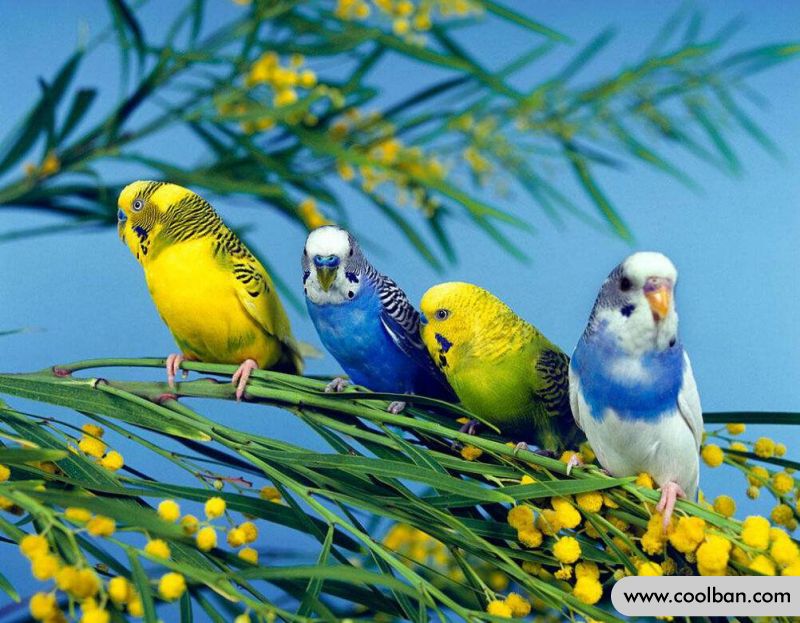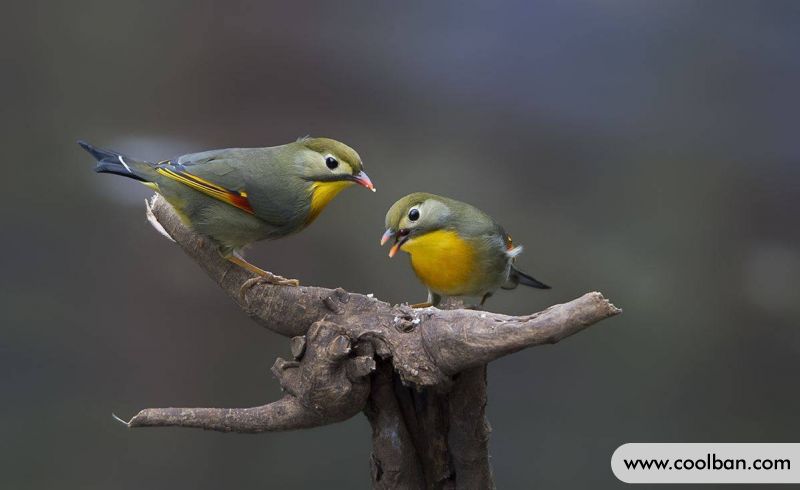Pet Bird Feeding Guide
2022-05-01
Pet birds can make great animal companions. Although they are small, birding should not be taken lightly. Depending on the species of bird, some of them can live to 10
over the age of . In captivity, birds require a lot of care and attention. Pet birds come in a wide variety of species, sizes and sizes. It should not be given to others or purchased for young children, as they require structured and targeted care or they may not be easily domesticated and vulnerable.

1. Know your pet bird
It is very important to know where your pet bird was born and raised. Although birds are usually pets, they are not domesticated. Therefore, they will always have natural tendencies and behaviors. Wild birds should not be kept as pets. Pet birds should be purchased from a reputable breeder who can show you the living conditions of the parent bird and hand-raise the pet bird after hatching to ensure that the pet bird is comfortably coupled with human interaction. Alternatively, pet birds can be adopted from a local rescue organization. Metal leg straps are required by law for all kept pet birds and must be followed before purchasing or adopting a pet bird. When they are young, hand-raised pet birds have intact, sturdy straps on their legs that cannot be removed as adults. The leg bands of wild birds are often incomplete.
2. Life
Another factor to consider when raising a pet bird is its longevity. Pet birds can be valuable companions, but that doesn't include caring for them in unforeseen circumstances, or if they outlive you. Pet birds should not be released into the wild as they are unable to protect themselves and are vulnerable to starvation, injury and predators. Also, you need to consider the social structure of the species, as some pet birds need the company of other pet birds, while others are more solitary and will develop strong bonds with humans.

3. Diet of bird cages and pet birds
Caring for a pet bird involves giving it a cage that is the right size and shape. In addition to a strict schedule, clean the cage daily, prepare fresh food (eg: fruits and vegetables) for the pet bird, and interact with it frequently (including: toys, games). Bird cages should include toys, perches, clean surfaces, fresh water, and surfaces or areas where meals are frequently eaten. In addition to the main cage, pet birds should have designated surfaces throughout the house to interact with their owners. Also, birds should be kept away from kitchens to avoid hot surfaces and fogging odors or candles. Teflon released by burning nonstick pans can cause respiratory distress and even death in pet birds.
An important choice for pet bird owners is deciding whether to let them fly or clip their wings. Flying pet birds can lead fulfilling lives in an outdoor aviary. Of course, they can also fly around the room. However, flying in confined spaces can result in life-threatening injuries such as broken wings or legs, or broken beaks and bleeding. Flying pet birds can also easily escape or roam freely outdoors while also attracting predators including dogs, cats or outdoor animals. If you choose to trim your pet bird's wings, this should first be done by a veterinarian or bird professional. The correct way to clip wings is not painful for pet birds and should be done every time Cut every 4-6 months. Another reason pet birds have their wings shortened is to facilitate gliding to prevent hard landings and injuries.
Like other pets, pet birds undergo annual veterinary health checks to ensure their health, as well as further tests such as blood and stool tests. Pet birds should be administered by a board-certified avian veterinarian or a veterinarian specially trained in bird handling and medication.

Pet bird guide
Pet bird 1. Budgerigar (aka parrot)
Size: 6-8 inches
Cage Suggestions: Long Cages for Flying and Jumping
Lifespan: 10-12 years
More info: It's considered a "best choice for first-time birders."
Pet bird 2. Canary
Size: 5-7 inches
Cage Advice: Use a cage skirt to avoid confusion.
Lifespan: Up to 10 years
More info: This bird comes in over 200 species and multiple body colors.

Pet bird 3. Australian parrot
Size: 10-12 inches
Cage Suggestions: Since they are ground foragers, a cage is required to allow them to find food on the bottom or floor.
Lifespan: Up to 20 years
More info: They are very friendly parrots and can often learn to imitate whistling or talking.
Pet bird 4. Love bird
Size: 6-8 inches
Cage Advice: They prefer to live in pairs, but can also live alone, but require human attention.
Lifespan: Up to 20 years
More info: Like most parrots, lovebirds are very active.

Pet bird 5. finches
Size: 4 inches
Cage suggestion: They need a large cage as they usually live in groups of 3-5.
Lifespan: Up to 10 years
More info: Finches are usually not easy to keep alone, they should live in groups.
Large parrots such as cockatoos, Amazons, African greys and macaws should only be kept by professionals or enthusiasts due to their very long lifespan (over 30 age), if their needs are not adequately met, they require several hours of daily care and can develop serious medical and behavioral problems. These birds are very smart and strong.
Owning a pet bird is a lot of responsibility. Before purchasing a pet bird, it is important to consider the pet bird's daily care, routine, diet, health, socialization and longevity. If keeping birds is too difficult, consider purchasing a bird feeder or joining a bird watching group.

1. Know your pet bird
It is very important to know where your pet bird was born and raised. Although birds are usually pets, they are not domesticated. Therefore, they will always have natural tendencies and behaviors. Wild birds should not be kept as pets. Pet birds should be purchased from a reputable breeder who can show you the living conditions of the parent bird and hand-raise the pet bird after hatching to ensure that the pet bird is comfortably coupled with human interaction. Alternatively, pet birds can be adopted from a local rescue organization. Metal leg straps are required by law for all kept pet birds and must be followed before purchasing or adopting a pet bird. When they are young, hand-raised pet birds have intact, sturdy straps on their legs that cannot be removed as adults. The leg bands of wild birds are often incomplete.
2. Life
Another factor to consider when raising a pet bird is its longevity. Pet birds can be valuable companions, but that doesn't include caring for them in unforeseen circumstances, or if they outlive you. Pet birds should not be released into the wild as they are unable to protect themselves and are vulnerable to starvation, injury and predators. Also, you need to consider the social structure of the species, as some pet birds need the company of other pet birds, while others are more solitary and will develop strong bonds with humans.

3. Diet of bird cages and pet birds
Caring for a pet bird involves giving it a cage that is the right size and shape. In addition to a strict schedule, clean the cage daily, prepare fresh food (eg: fruits and vegetables) for the pet bird, and interact with it frequently (including: toys, games). Bird cages should include toys, perches, clean surfaces, fresh water, and surfaces or areas where meals are frequently eaten. In addition to the main cage, pet birds should have designated surfaces throughout the house to interact with their owners. Also, birds should be kept away from kitchens to avoid hot surfaces and fogging odors or candles. Teflon released by burning nonstick pans can cause respiratory distress and even death in pet birds.
An important choice for pet bird owners is deciding whether to let them fly or clip their wings. Flying pet birds can lead fulfilling lives in an outdoor aviary. Of course, they can also fly around the room. However, flying in confined spaces can result in life-threatening injuries such as broken wings or legs, or broken beaks and bleeding. Flying pet birds can also easily escape or roam freely outdoors while also attracting predators including dogs, cats or outdoor animals. If you choose to trim your pet bird's wings, this should first be done by a veterinarian or bird professional. The correct way to clip wings is not painful for pet birds and should be done every time Cut every 4-6 months. Another reason pet birds have their wings shortened is to facilitate gliding to prevent hard landings and injuries.
Like other pets, pet birds undergo annual veterinary health checks to ensure their health, as well as further tests such as blood and stool tests. Pet birds should be administered by a board-certified avian veterinarian or a veterinarian specially trained in bird handling and medication.

Pet bird guide
Pet bird 1. Budgerigar (aka parrot)
Size: 6-8 inches
Cage Suggestions: Long Cages for Flying and Jumping
Lifespan: 10-12 years
More info: It's considered a "best choice for first-time birders."
Pet bird 2. Canary
Size: 5-7 inches
Cage Advice: Use a cage skirt to avoid confusion.
Lifespan: Up to 10 years
More info: This bird comes in over 200 species and multiple body colors.

Pet bird 3. Australian parrot
Size: 10-12 inches
Cage Suggestions: Since they are ground foragers, a cage is required to allow them to find food on the bottom or floor.
Lifespan: Up to 20 years
More info: They are very friendly parrots and can often learn to imitate whistling or talking.
Pet bird 4. Love bird
Size: 6-8 inches
Cage Advice: They prefer to live in pairs, but can also live alone, but require human attention.
Lifespan: Up to 20 years
More info: Like most parrots, lovebirds are very active.

Pet bird 5. finches
Size: 4 inches
Cage suggestion: They need a large cage as they usually live in groups of 3-5.
Lifespan: Up to 10 years
More info: Finches are usually not easy to keep alone, they should live in groups.
Large parrots such as cockatoos, Amazons, African greys and macaws should only be kept by professionals or enthusiasts due to their very long lifespan (over 30 age), if their needs are not adequately met, they require several hours of daily care and can develop serious medical and behavioral problems. These birds are very smart and strong.
Owning a pet bird is a lot of responsibility. Before purchasing a pet bird, it is important to consider the pet bird's daily care, routine, diet, health, socialization and longevity. If keeping birds is too difficult, consider purchasing a bird feeder or joining a bird watching group.